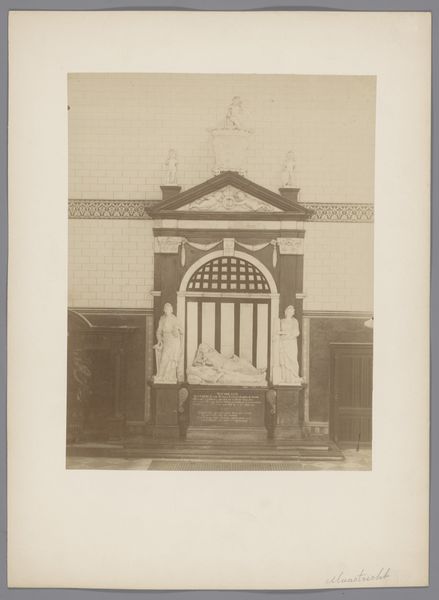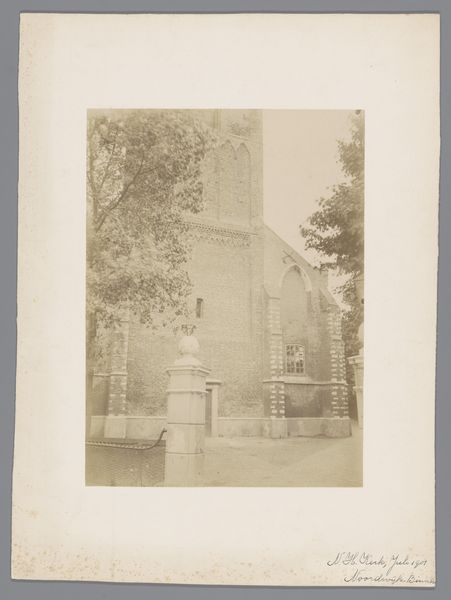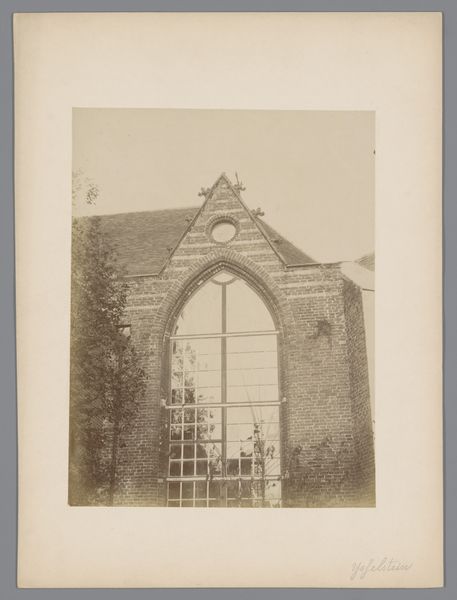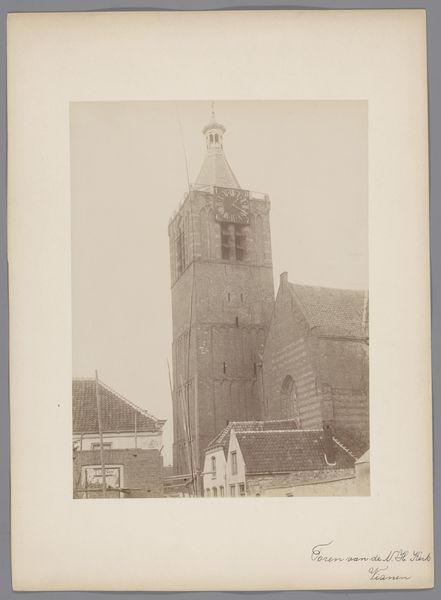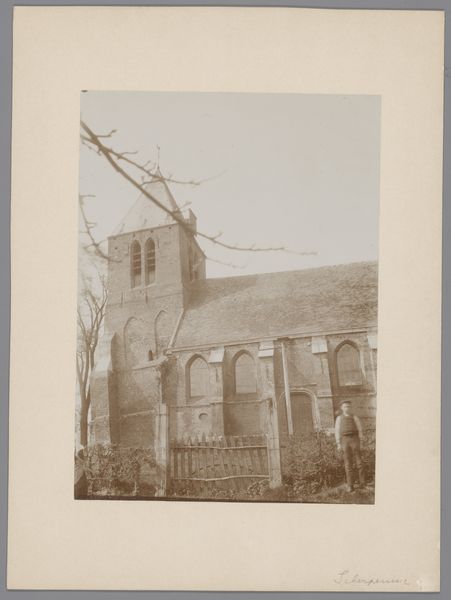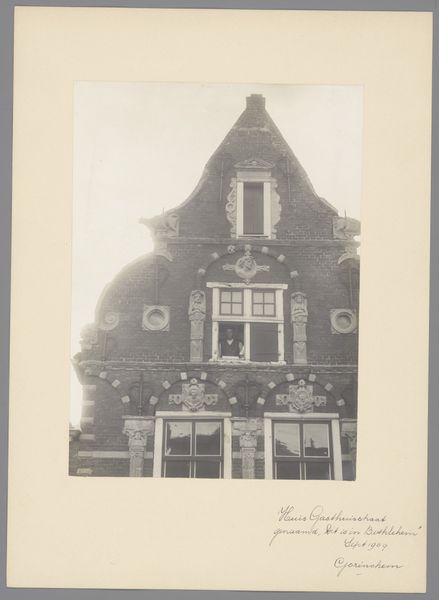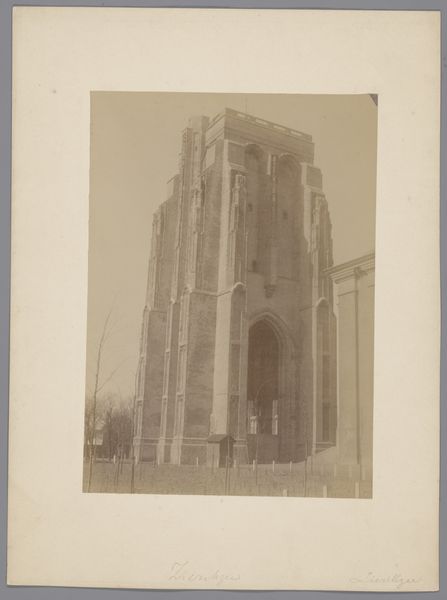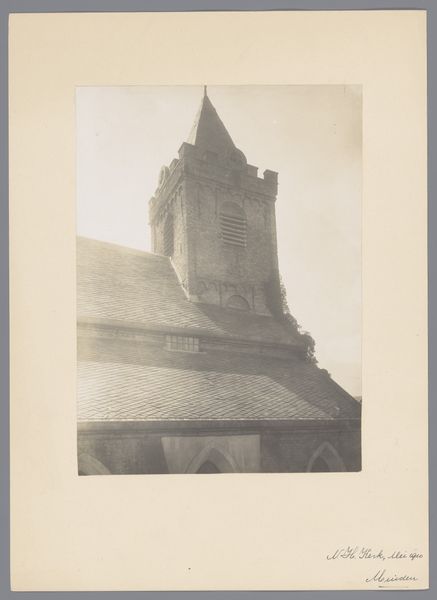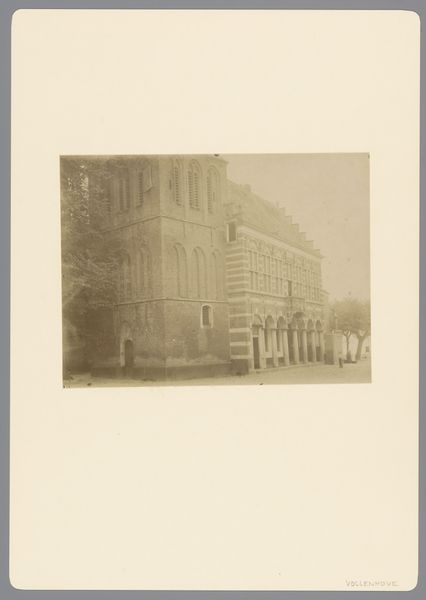
Dimensions: height 236 mm, width 163 mm
Copyright: Rijks Museum: Open Domain
Curator: Here we have an albumen print entitled "Westzijde van de Catharijnekerk te Utrecht," believed to be from around 1899. Something about its age makes it intriguing. What's your initial read? Editor: My first thought is “forboding.” It’s like looking at a monument rendered in sepia tones, giving it an overwhelming solemn feeling. I’m sensing a palpable tension between aspiration and gravity, the light somehow unable to fully brighten the brick. Curator: Yes, that somber quality seems appropriate given what was happening around that time. As a symbol of religious power, the Catharijnekerk, or at least its depiction here, mirrors societal anxieties—an eroding cultural and religious authority. The towering brickwork and overall muted atmosphere feels very evocative of shifting perspectives. Editor: Precisely. The architectural style, hinting at grand aspirations, contrasts sharply with the photographic rendering that appears almost faded and melancholic. Consider the historical context – the fin-de-siècle unease, with emerging challenges to traditional structures across the West. Curator: Agreed. This photographic image invites us to reflect on not just architectural structure but the foundations on which entire social structures are built. Its creation near the dawn of a new century—did its original commissioner even realize they were at an inflection point? Were they aware of how this particular image of faith and heritage might be viewed generations later? Editor: Maybe that wasn't their concern, and perhaps they were considering more subtle tensions within their world. What strikes me about this image now is that it isn't just an architectural record, but also speaks about gender roles in its lack of inclusion. Are we just missing them on the frame's edge, or is there something more subtle to understand from this framing of the scene? This building existed within, was even shaped by, gendered social realities, yet this element feels strangely absent here, don't you think? Curator: That's such a powerful thought, really allowing the picture to reverberate. Makes you think how even supposedly objective representations inherently reflect an existing societal viewpoint. Perhaps those in charge chose which slices of time would last. Editor: So, looking at this now, it feels less like just observing history and more about engaging in a nuanced debate about past, presence, and all those silent voices trapped in between. Curator: Well, now when I walk away from it I will see how the image reflects ourselves in that bygone era.
Comments
No comments
Be the first to comment and join the conversation on the ultimate creative platform.

